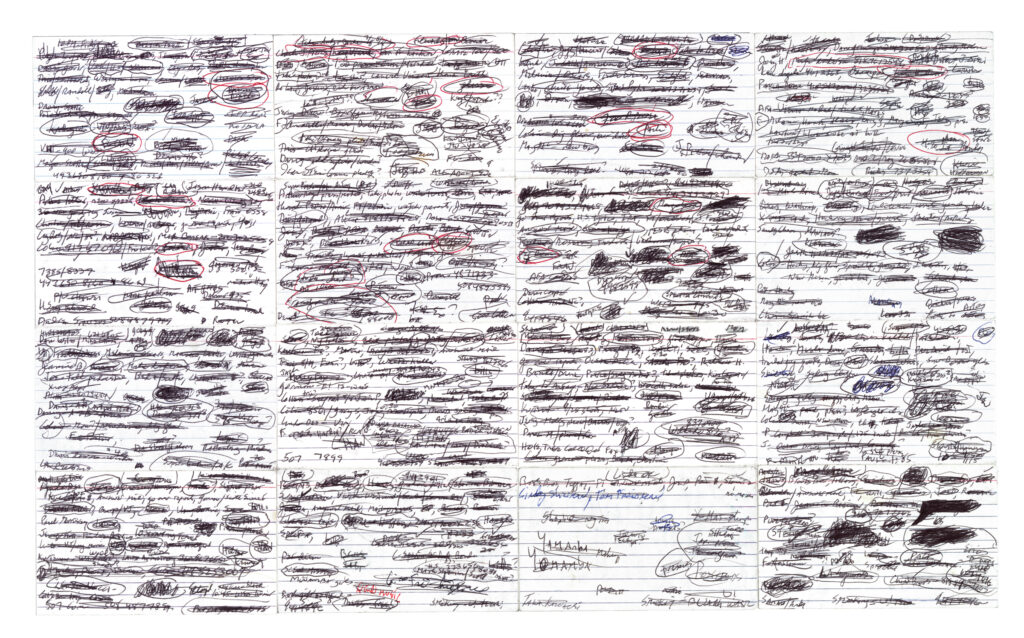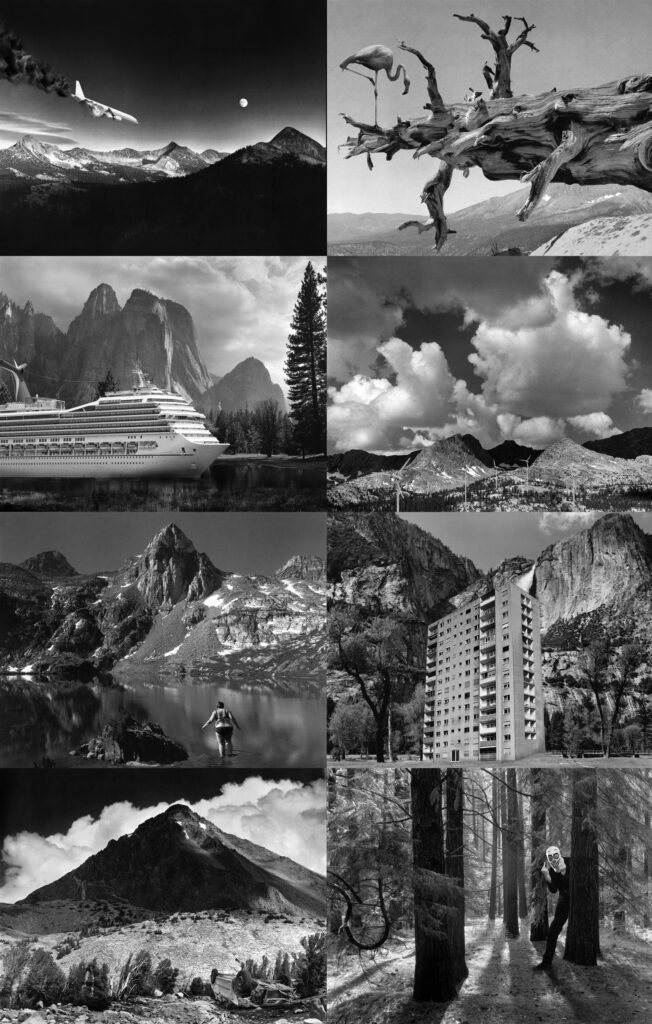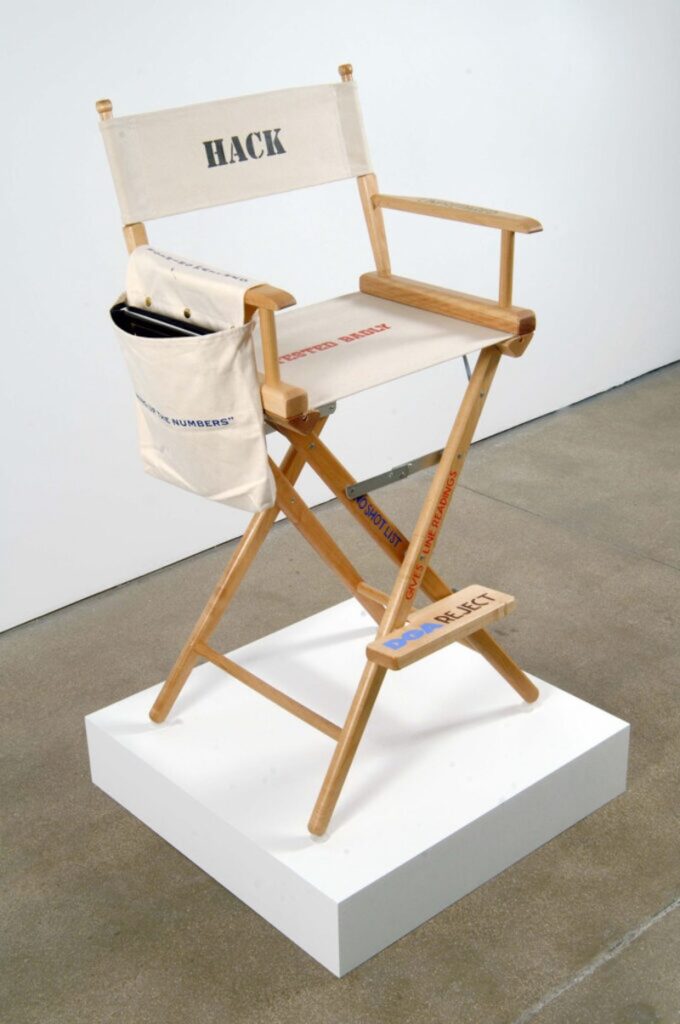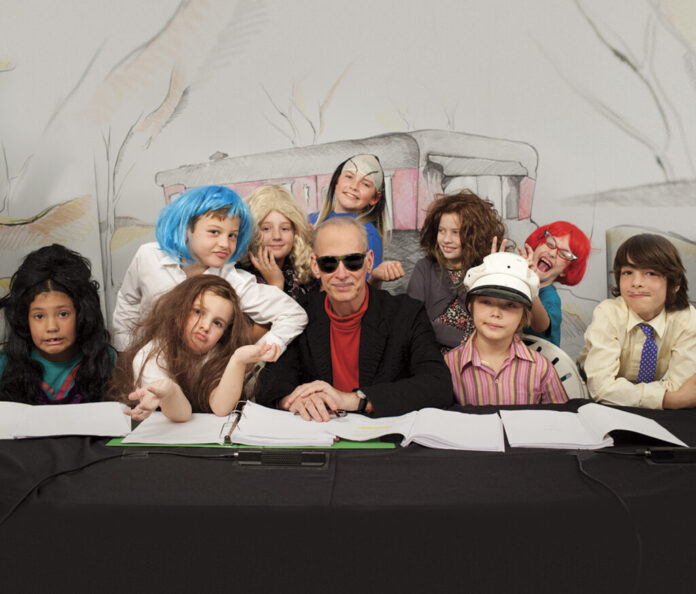John Waters’ favorite artist is Cy Twombly, known for his loops and scribbles as well as the influence he had on artists like Anselm Kiefer and Jean-Michel Basquiat.
One reason he loves Twombly, Waters says, is the painter’s power to outrage.
“They hate him the most,” Waters said. “Think about those scribble drawings and how radical they were. They’re still radical, and they’re beautiful.”
As a writer (his most recent book is a novel published in 2022, Liarmouth: A Feel-Bad Romance) Waters says he can particularly appreciate Twombly’s revolutionary scrawling.
“It’s art about penmanship,” he said. “Having bad handwriting is enough!”
One of the pieces in The Worst of Waters at San Francisco’s Rena Bransten Gallery through Sat/16, is Twomblyesque. Every day Waters writes a list of what he has to do on an index card (“You’re on my list today!”), and before he goes to bed, scribbles them out. Waters used those lists in a piece called 16 Days.

The show, subtitled “Works never before exhibited in San Francisco. The rudest, the hardest to sell, the just plain wrong”—and billed as “a hit parade of hell”—is Waters’ fifth one with the gallery. Jennie Baie, the gallery director, says they love working with him, and not just because of his art.
“He is one of the loveliest people I’ve ever known. He’s the most gentlemanly and giving. I’m always amazed by that,” she said. “When he first started showing at art galleries, he showed with Colin de Land’s American Fine Arts in New York. Colin was the one who said, ‘You should show with Rena in San Francisco, and he called up Rena and said, ‘You should show John Waters in San Francisco.’ And we were like, ‘Sure, it sounds like fun.’”
Dubbed the “Pope of Trash,” Waters is a filmmaker known, of course, for controversial cult classics he made in the 1970s like Female Trouble and Pink Flamingos, which he calls part of his “Trash Trilogy” (Desperate Living is the third one). The show at Rena Bransten includes Kiddie Flamingos, a 74-minute G-rated version of the controversial and wildly campy film, with children wearing wigs and costumes, and Waters doing the voice-over. (At the end of the movie, the kids eat dog food—about as disgusting to them as what Divine ate in the non-kid version).
Waters’ visual art has been shown all over the world, with solo museum shows at places including Kunsthaus Zurich, Switzerland, The Andy Warhol Museum in Pittsburgh, and the New Museum of Contemporary Art in New York. He’s also been shown in his hometown, at the Baltimore Museum of Art.

A few years ago, Waters bequeathed his collection of nearly 400 pieces to the museum where he went as a kid (as part of the donation, the museum agreed to name four gender-neutral bathrooms after him).
His mother used to take him there as well as to the opera. “I guess they didn’t know what is was going to lead to,” Waters joked. “As soon as I saw contemporary art and how mad it made people, I was hooked,” he said. “I saw Nude Descending a Staircase in Life Magazine, and I pretended I was that nude all the time. Painting spoke to me right from the beginning.”
Waters, you won’t be surprised to hear, wants his works to be humorous- he hopes to go beyond witty to get to make-you-laugh funny.
“Humor is political. It’s how you turn change people’s opinions,” Waters said. “Humor is why I didn’t get beat up in high school. Humor is how you win wars, and humor how you win elections. Humor is how you survive.”
Cancel Ansel, a work Waters describes as a “home invasion” into famed photographer Ansel Adams, shows Adams photos with something Waters has inserted—a huge apartment building in front of some mountains, a massive cruise ship in a lake, and a man in a clown mask (Waters) coming out from behind a tree, flipping off the viewer.

Cancel Ansel made me laugh. So did Bad Director’s Chair (“You wouldn’t laugh if you were a director!” Waters said) which has statements people in the profession don’t want to hear like “Hack,” “Unreadable,” and “Reject,” written on it.
An example of the kind of work that can change political opinion is The Hot Seat, 11 photographs of executions in movies or TV (including cartoon character Lisa Simpson). Waters has taught in prison, and he says he worked with former Maryland Governor Martin O’Malley to get rid of the death penalty. He calls The Hot Seat his anti-capital punishment piece.
“Politics where you’re on a soapbox and you lecture people never works,” he said. “But politics that makes people laugh or see something in a different way, that’s how you get them to agree with you. I don’t think anybody looks at The Hot Seat and says, ‘We should bring that back.’”
THE WORST OF WATERS is on view through Sat/16 at Rena Bransten Gallery at Minnesota Street Projects, SF. More info here.





